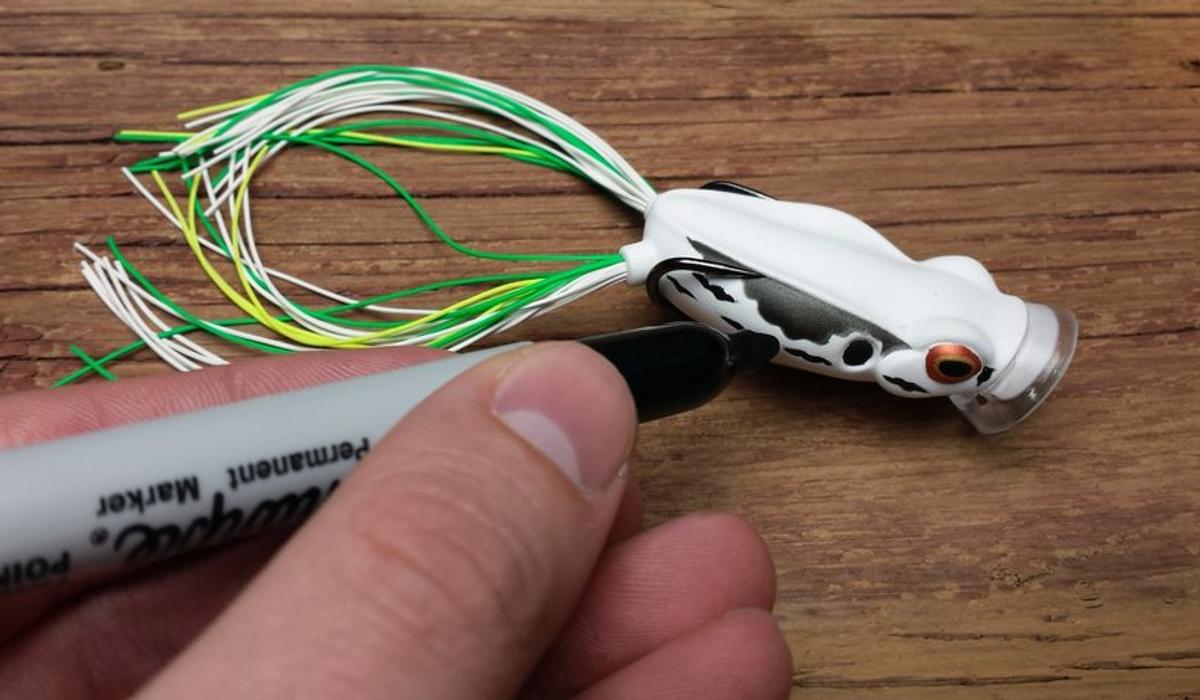7 "Tweaks" To Your Frogs To Help Them Catch More Bass
Frog fishing isn’t for the faint of heart. Seeing a big bass inhale a frog as it slides off a lily pad, or skims across a patch of duckweed is one of the most heart-attack inducing things an angler can experience, followed by the chaos that is pulling a bass (along with 5 pounds of grass) back and into the boat.
As fun as it is, it’s no surprise that hollow-bodied frogs are one of the fastest growing segments of the tackle industry. Just 10 years ago, there were only a couple brands of frog available – and now there are literally 15-20 different brands of top-quality frog hanging from the pegs of most tackle shops.In addition to quantity, the quality of hollow-bodied frogs has also gone way up in recent years. In order to catch bass consistently, you used to go through a whole routine of alterations on even the best frogs on the market, and now you can catch bass on most right out of the pack.That doesn’t stop us from tinkering though…Here are 7 hacks for hollow bodied frogs that you should try next time you get a hankering to go frogging…
1. Trim The Legs
Want to “walk the frog?” try trimming the legs. By shortening the legs down to an inch or so– you have less rubber in the water, and your frog will “walk” much better. Try shortening the legs to different lengths as well for even more action. Trimming the legs also increases hookups in situations where the bass are not aggressively striking as it gives a more compact silhouette.
2. Add A Rattle
Sound can be a huge component in success on the water, and it’s no different when frogging. Try inserting a jig or tube rattle into the body chamber of your frogs. It adds weight, helps you cast farther, and make a better indentation in thick grass mats – all while giving an additional sound attraction.
3. Try Fur Or Tinsel
Ever have the rubber legs on a frog become dry rotted over time? Don’t throw that frog away! Instead, try replacing the legs with an alternative material like bunny strips, tinsel, or marabou… All these materials are readily available at any fly tying shop – and will give your frog a completely different look.
4. Superglue The Nose
Tired of squeezing water out of your frog every 10 casts? Try supergluing the nose shut before you even make a cast. This will seal the nose, and prevent water from seeping in. Super glue also works to repair body cracks and helps secure the lead weight in the belly.
5. Change The Colors
When changing the skirts (see number 3) don’t be afraid to get unique with colors. How many bass have seen solid white, black, or natural colored frogs in recent years? Mix it up and try adding yellow legs to a white frog, or pink to a black frog… How about blue legs on a black frog? A little bit of contrast allows bass to track from farther away, and helps you see if the bait has been eaten.
6. Bend Out The Hooks
Although hookup ratios are probably the place where frogs have made the most progress, they can still be somewhat low in certain situations. In loose cover or open water, that can be remedied by slightly bending out the hooks of your frog. Only a 5 or 10 degree bend will dramatically improve your hook’s bite – and result in more fish in the boat.
7. Add Scent
Like adding a rattle – adding scent is another way to make your frog stand out from the rest. Their hollow bodies make excellent scent chambers, and you can put enough in there to last the whole day. Load one up with your favorite scent next time you’re out – and see how much longer they hold on.
Updated July 20th, 2016 at 10:41 AM CT


